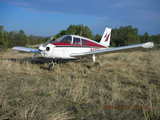
|
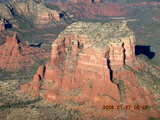
|
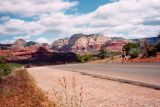
| |
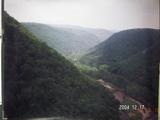
| |||
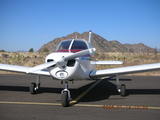
|
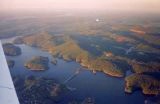
|
Being Both a Pilot and a Runner
2007 June 22

|

|

| |

| |||

|

|
 Learning to fly was a big deal to me and
I got my private-pilot license about twenty years ago.
Now I can fly anywhere I want and any time I want,
assuming I have good weather, access to an airplane,
and the anywhere I want to go is someplace
a little airplane can fly.
Learning to fly was a big deal to me and
I got my private-pilot license about twenty years ago.
Now I can fly anywhere I want and any time I want,
assuming I have good weather, access to an airplane,
and the anywhere I want to go is someplace
a little airplane can fly.
The reality for many newly-licensed pilots is they have a wonderful-but-expensive hobby with nowhere they really want to go. The cliché says "getting there is half the fun" but most of us still want being there to be the other half of the fun.
When renting an airplane was about $50/hour we would fly someplace an hour away, eat lunch at the airport restaurant, and fly home. These fly-to-eat missions became known as $100 hamburgers. There is even a web site devoted to $100 hamburger opportunities. There are oodles of airport restaurants in interesting places some of which have wonderful scenery. Most airport restaurants wouldn't be on my restaurant list if they weren't at airports.
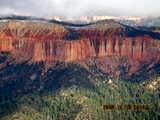
|
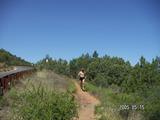
| |
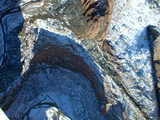
|
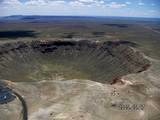
|
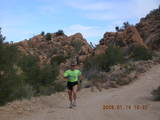
|
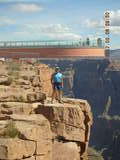 There are wonderful places to go in a light airplane,
places I might never get to visit otherwise.
Here in Phoenix I'm several hours by car
from some beautiful places north of here,
many of which are not served by commercial aviation,
and the Sunday-afternoon, coming-home traffic is awful.
Back east, down south, and out west it's the same,
there are terrific places to go by light airplane.
There are wonderful places to go in a light airplane,
places I might never get to visit otherwise.
Here in Phoenix I'm several hours by car
from some beautiful places north of here,
many of which are not served by commercial aviation,
and the Sunday-afternoon, coming-home traffic is awful.
Back east, down south, and out west it's the same,
there are terrific places to go by light airplane.
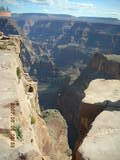 But these light-airplane adventure trips are still
adventure trips,
usually multiple-day journeys to exotic places.
At a minimum they're all-day commitments,
they usually cost significant money for hotels and car rentals,
and they're the trips I plan in advance.
But these light-airplane adventure trips are still
adventure trips,
usually multiple-day journeys to exotic places.
At a minimum they're all-day commitments,
they usually cost significant money for hotels and car rentals,
and they're the trips I plan in advance.
I take my airplane on half a dozen adventure trips in a year, Arches, Bryce Canyon, Canyonlands, Grand Canyon, and Zion National Parks. I can visit friends and family in Piper-Cherokee range, between 100 and 400 miles away. Closer then 100 miles is easier to drive and further than 400 miles is probably easier using commercial aviation, buying an airline ticket. Trips like these are terrific, but not the usual weekend flying trips.

|
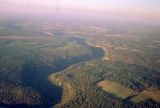
|

| |
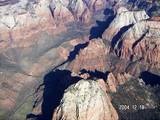
|
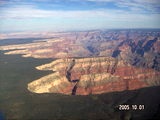
|
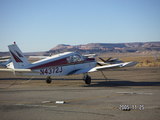 I'm not the only pilot who is also an active runner.
The simple statistics suggest
there are thousands, maybe tens of thousands,
who are active in both hobbies.
So why not combine the two hobbies?
I'm not the only pilot who is also an active runner.
The simple statistics suggest
there are thousands, maybe tens of thousands,
who are active in both hobbies.
So why not combine the two hobbies?
I have used my fleet feet as personal transport from one airport to another, to ferry my airplane or to meet some pilots where I wasn't comfortable landing, but aviation distances tend to be much longer than pedestrian distances. The easiest way to enjoy both hobbies for me is fly for an hour to somewhere interesting, run for an hour, and fly home.
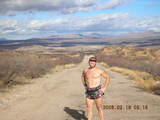 Think of a fly-run-fly adventure trip
as a $100 hamburger without the cholesterol.
I find the argument for flying somewhere to run
more convincing than flying somewhere to eat
and, besides,
there may be a restaurant at the airport
for a post-run meal.
Think of a fly-run-fly adventure trip
as a $100 hamburger without the cholesterol.
I find the argument for flying somewhere to run
more convincing than flying somewhere to eat
and, besides,
there may be a restaurant at the airport
for a post-run meal.
If you're one of the 98% who think running is for the birds, then have some sympathy for the 2% of us who enjoy it. After all, most people out there think flying is for the birds, we do it, and we love it dearly.
The challenge for the running pilot (or the flying runner) is finding the right airports for flying to and running from.
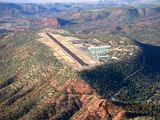
|
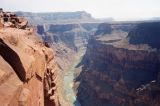
|
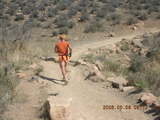
|
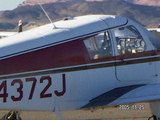
|
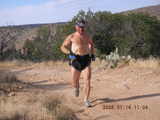
|
 My fly-run-adventure plan is a half-day trip,
an hour flight out,
one or two hours running,
and an hour flight back.
That leaves a half day for other things.
My fly-run-adventure plan is a half-day trip,
an hour flight out,
one or two hours running,
and an hour flight back.
That leaves a half day for other things.
Grab a local sectional chart and draw a circle an hour out, about 100 nautical miles in my Cherokee 140. Most of us are based in big airports in big cities with some nice countryside a hundred miles away. Look around that one-hour ring for small airports in big, open spaces. There's usually a town two or three miles away and a thin-line road going several miles with few intersections. Yellow color on the sectional indicating congested area is a bad omen for good running.
I found Tuweep Airport (L50) as a running adventure and that led me to the Arizona Pilots Association (APA), so you never know what you'll find when you go looking for something.
 There's a road from the airport and
it's usually
Airport Road
and it's usually down hill from the airport.
(They usually put airports on high mesas.)
Maybe it goes a few miles before reaching another road
or maybe it goes down the hill to another street
like a long driveway,
but it isn't a major crossing.
We're looking for quiet airports,
multicom 122.9,
maybe unicom,
almost certainly not control-towered.
If there's a lot of air traffic,
then there's probably a lot of automobile traffic as well.
There's a road from the airport and
it's usually
Airport Road
and it's usually down hill from the airport.
(They usually put airports on high mesas.)
Maybe it goes a few miles before reaching another road
or maybe it goes down the hill to another street
like a long driveway,
but it isn't a major crossing.
We're looking for quiet airports,
multicom 122.9,
maybe unicom,
almost certainly not control-towered.
If there's a lot of air traffic,
then there's probably a lot of automobile traffic as well.
Look for interesting terrain between home base and a prospective running spot so the flight will be pretty. Besides having few roads at the destination, check out whether they're straight or twisty. Straight roads usually indicate level terrain while meandering roads usually get that way by going around and over hills. Look at the sectional chart as a runner as well as a pilot. What is this place going to be like on the ground?
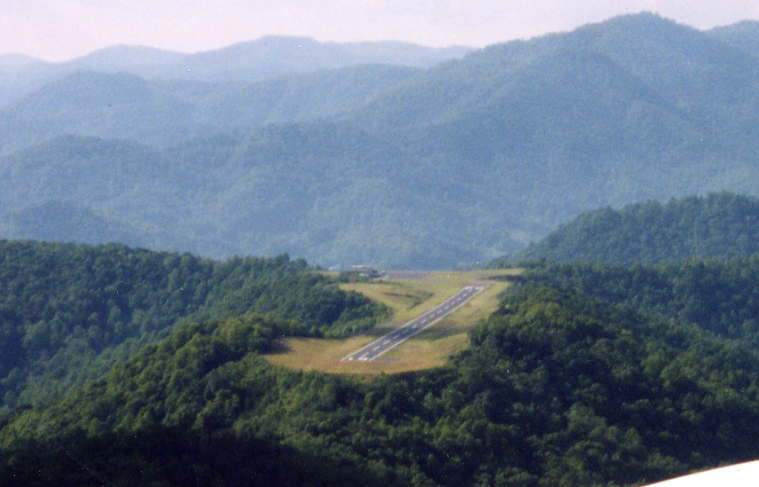 Sometimes a potential running airport can be too isolated.
Gila Bend looked appealing,
open desert with nothing for miles and miles,
just a single road.
Alas, that single road was a major two-lane highway
with lots of truck traffic and not much shoulder
and there were barbed-wire fences with
(as I remember it)
NO TRESPASSING signs marking the off-road opportunities.
Sometimes a potential running airport can be too isolated.
Gila Bend looked appealing,
open desert with nothing for miles and miles,
just a single road.
Alas, that single road was a major two-lane highway
with lots of truck traffic and not much shoulder
and there were barbed-wire fences with
(as I remember it)
NO TRESPASSING signs marking the off-road opportunities.
Don't be shy about doing some aerial reconnaissance before landing. Get high enough above pattern altitude not to hit anybody since you'll be concentrating on the ground. Since you're in the vicinity of an airport, remember to look around frequently for other airplanes between ground observations. Look for a few roads, maybe dirt roads, maybe even trails, with farms or a few houses along them. If you see cars from the air, then figure you'll see even more cars on the ground, not the best running road.
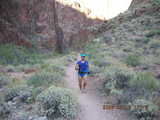 Also keep in mind that pleasantly-remote places to run
are going to be served by small airports with few people around.
I think I landed nine times at
Gilmer (49A)
and only saw another person there once.
I saw a fellow at
Globe (P13)
recently, but he wasn't interested in conversation.
Also keep in mind that pleasantly-remote places to run
are going to be served by small airports with few people around.
I think I landed nine times at
Gilmer (49A)
and only saw another person there once.
I saw a fellow at
Globe (P13)
recently, but he wasn't interested in conversation.
When you get down and parked, it's time to enjoy the journey on foot. In addition to their aviation Global Positioning System (GPS) gear, Garmin makes a line of running watches that strap on the wrist. Not only does its display tell me how far and fast I've run, its simple moving map also can tell me how to get back if I get lost. If you're going for a long run in a hot or dry place, then think about bringing some water along with snacks.
It sounds like I'm picky about my running airports, but I've managed to find them in several states I've lived in. These are wonderful little strips, not too backcountry for my Cherokee 140, but small enough that you might not want to take anything much larger into them.
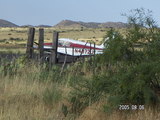
|

|
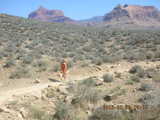
|
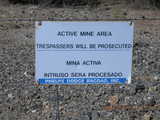
|
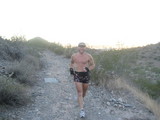
|
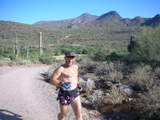 When you get back from your run (or walk or hike),
it's time to fly home.
You'll likely have to get out of a small strip,
maybe high altitude,
maybe on a warm afternoon with high density altitude.
You may have to find stick and rudder skills
that have grown rusty at
the large, urban, long-runway, tower-controlled airports
many of us fly out of.
If there's a $100-hamburger restaurant at the airport,
then you might want to grab a bite before flying home,
a chance to relax before climbing into the airplane.
When you get back from your run (or walk or hike),
it's time to fly home.
You'll likely have to get out of a small strip,
maybe high altitude,
maybe on a warm afternoon with high density altitude.
You may have to find stick and rudder skills
that have grown rusty at
the large, urban, long-runway, tower-controlled airports
many of us fly out of.
If there's a $100-hamburger restaurant at the airport,
then you might want to grab a bite before flying home,
a chance to relax before climbing into the airplane.
While you're flying home wearing running shorts and a torn t-shirt, remember the people listening on the radio can't see you, so it doesn't matter what you're wearing.
Also, while you're flying home, be thankful to have two hobbies you can combine. There are beautiful places to fly and terrific places to run. Combining the two allows the pilot-runner to see places few get to see.
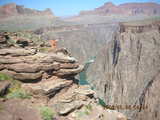
|
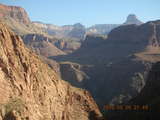
| |
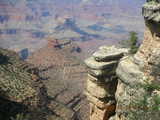
|
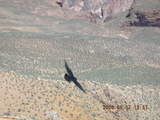
|
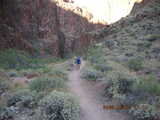
|
|
21:42:20 Mountain Standard Time (MST). 20394 visits to this web page. |